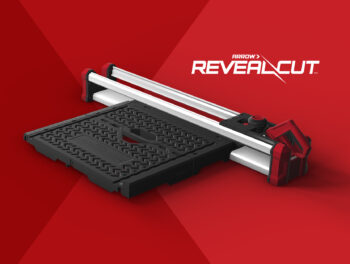
Most small and medium-sized manufacturers, regardless of the product category, simply don’t have the financial resources to support sustained advertising/promotional campaigns. In terms of establishing brand awareness and driving top-of-mind awareness, deep-pocketed large companies will always hold a competitive advantage over smaller players.
But in true David & Goliath fashion, there are some meaningful ways that small and medium sized manufacturers can gain an edge. By combining smart strategic thinking with effective packaging and merchandising, they can beat their larger competitors where and when it really matters: at the retail shelf.
The key reason why large manufacturers lose at the point of sale is because of their size, bureaucracy and corporate politics. These factors, often times, make it more difficult for them to reach smart, focused decisions about their retail presence. Too many masters can muddle and/or dilute critical decisions on package design and in-store efforts. With fewer chefs in the kitchen and a more consolidated decision-making process, smaller companies usually have an inherent advantage.
Here are three ways your company can smartly compete:
1. Know Everything About Your Retailer:
Whether you’re seeking shelf space in big box or small specialty retailers, you need to understand everything about their stores’ unique physical environment and approach to product display. Because it’s truly their playing field, you must learn their particular philosophy and requirements. By adapting an approach that aligns with their way of thinking, you’ll have a better chance of achieving success. Your awareness of their requirements demonstrates a certain level of respect that’s likely to be returned.
Building personal relationships with retail decision makers is also critical. Again, a company’s size yields no real advantage here. It’s about establishing connections. Getting to know them as people, keeping in touch regularly, providing helpful information and/or showing appreciation – simple gestures that can yield some significant results.
2. Make Your Product the Hero:
Big companies can sometimes be too focused on building their brand, versus selling a particular product. This can lead to the product information being marginalized in the overall packaging design. With the shelf being the most critical point in a consumer’s decision-making process, this again presents a unique opportunity for smaller companies to succeed. Always make your product the hero. By taking a more strategic approach to package design, you can help amplify your product and its benefits. It’s the perfect opportunity to overcome any large competitor’s share of voice in advertising/promotional spending.
Here are a few guidelines for effective package design:Keep your graphics simple and visually appealing. Limit the content to only a few key features and benefits (this takes a fair amount of discipline and conviction.) Consider both left brain and right brain thinking. Remember that consumers make purchase decisions both on a rational and emotional basis. As Charles Revson, the founder of Revlon Cosmetics, once observed, “Women don’t buy lipstick. They buy hope.”
3. Own the Environment You Can Control:
Smaller companies can also gain advantage over larger competitors in these two important ways:
Your Product at Shelf. All companies must play by the retailer’s rules to get on the shelf, but once their product is established, small and medium-sized companies can beat the big brands by combining effective packaging design with effective merchandising. Mini-displays, for example, are a cost-effective option that can dramatically improve your overall impact. By sitting on the shelf, mini-displays can cleverly showcase the product and provide additional point of purchase appeal. Additionally, if the nature of your product demands closer consumer examination (e.g. out of the package), mini-displays can help reduce that behavior. (They can also reduce the risk of having products parts or pieces pilfered from the product package.)
The Out of Box Experience. In addition to leveraging opportunities in store, smaller companies can beat larger competitors by designing a more thoughtful and consistent customer experience once the product gets home. Attention to details with the entire “out of box” process should be strategically considered– ranging from internal packaging and clear instructions, to the availability of online and telephone support. This will not only increase the likelihood of a positive experience, but could also drive additional sales and lucrative word-of-mouth endorsements: the most powerful form of advertising in today’s world of real-time consumer feedback.
In the highly competitive retail environment, being a small or mid-sized company can have its advantages; but only if you seize the opportunities that larger companies ignore or are incapable of capturing.




